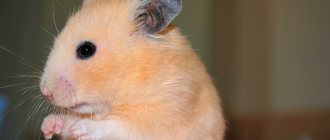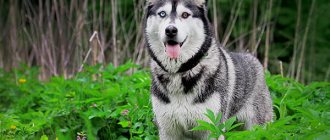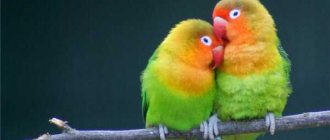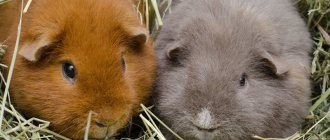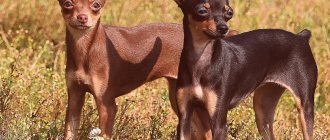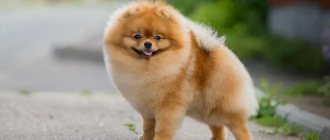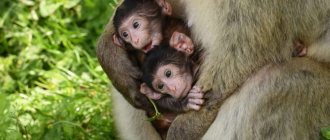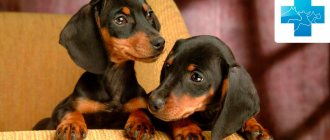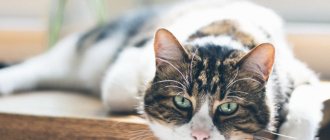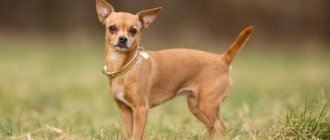- home
- Parrot
- FAQ
05/23/2019 When choosing a parrot as a pet, potential owners want to know the approximate lifespan of the bird. Considering the demand for miniature pets, how long lovebirds live is a pressing question for many. The main condition for the longevity of a parrot is an attentive and caring owner.
Lovebirds: description
This species of domestic birds includes nine main subspecies, the main differences of which are related to their appearance. These parrots are called lovebirds, because even in ancient times it was believed that if one of the birds dies, then the other will soon die from melancholy and sadness.
Appearance
Lovebirds are small decorative birds with a body length of 10 to 17 centimeters. The wing length of these birds is only 4 cm, and the tail length is about 6 cm. Adults weigh on average about 50 grams. These parrots have a relatively large head.
Interesting moment! The main color of lovebirds consists of green or greenish shades, although individual parts of the body, such as the rump, chest, head, neck and throat, can have a completely different color, depending on the subspecies of birds.
The beak of this species of parrot is quite thick and powerful, and at the same time has a noticeable curve. In a state of aggression, a pet can cause serious injury to both people and pets. Moreover, the color of the beak, depending on the subspecies, can be either red or straw yellow, including other shades. The bird's tail is relatively short, with a characteristic curve at the end. Parrots' legs are also short, although this does not prevent them from moving nimbly on any surface, including trees.
Behavior and lifestyle
The homeland of these domestic birds is considered to be tropical and subtropical forests, with mountain and steppe subspecies found. As a rule, being in natural conditions, lovebirds form numerous flocks and behave quite actively, while feeling great in the air, possessing excellent flight characteristics. The main activity occurs during the daytime, and at night these birds rest in the trees, securely clinging to branches and twigs. Misunderstandings may arise between flocks in the struggle for living space.
Need to know! Learning to speak in these parrots begins at an early age (one month), since adults are practically resistant to learning. In addition, compared to budgies, lovebirds take much longer to learn individual words, so only a few manage to teach their pets to pronounce at least some words.
Lovers of pet parrots should know that talkative lovebirds are very rare, since they remember words with great difficulty. If there are several birds in the house, then all the training efforts will be in vain, so you shouldn’t even bother training them.
Despite this fact, some birds, subject to the persistence and patience of the owner, still manage to learn up to one and a half dozen words. Tamed lovebirds behave very actively, communicating with all family members and with each other. They are devoted to their owners and get very bored when left alone.
How long do lovebirds live?
Being at home, when comfortable living conditions are provided for the bird, lovebirds can live up to a maximum of one and a half decades. Naturally, in the natural environment their life expectancy is noticeably shorter.
Lovebirds - All about the breed of parrots | Parrot breed - Lovebird
Types of lovebirds with photos
If we take lovebirds of all subspecies, then they have both some differences and some similarities.
Subspecies include:
Collared lovebirds (Agapornis swindernianus)
They are distinguished by their small size, within 13 cm, with a tail up to 3 cm long. The main color of the subspecies is green, while the neck is distinguished by a black color with an orange “necklace” on it. The chest area is yellow, and the rump area is ultramarine or blue. The bird's beak is dark, almost black.
Liliana's lovebirds (Agapornis lilianae)
They have almost the same body size or slightly larger. The main color is similar to the rosy-cheeked lovebirds, but the head and throat area are brighter in color. Generally, the upper part of the body is greener, while the lower part is colored in lighter shades. The bird's beak is red. It is almost impossible to distinguish a female from a male.
Masked lovebirds (Agapornis personatus)
They grow up to 15 cm in length, and the length of their tail is 4 cm. Parrots of this subspecies have quite bright and beautiful plumage colors, while the back, tail, belly and wings are green in color, and the head is black, interspersed with brown tones. The main color of the plumage is orange-yellow. The beak color is red, and there is a complete absence of sexual dimorphism.
Red-faced lovebirds (Agapornis pullarius)
They also have a body length of 15 cm and a tail length of 5 cm. The main color of the plumage is grass-green, while the area of the throat, cheeks, back of the head and forehead is painted bright orange. Females can be distinguished from males by their orange heads and overall coloring, made in yellowish-green tones.
Rose-cheeked lovebirds (Agapornis roseicollis)
They are characterized by a slightly longer body length (almost 17 cm) and a wingspan of up to 20 cm. Adults weigh up to 60 grams. This subspecies has a rather attractive body color, having intense green shades with a bluish tint. The throat and cheek areas are pink, and the forehead is bright red. The beak is distinguished by a straw-yellow color. Males are slightly smaller in size, but their coloring is brighter and more attractive.
Grey-headed lovebirds (Agapornis canus)
The average size of adults is about 14 cm, and their main color is green, with the upper chest, head and neck area being light gray. The bird's eyes are dark brown and its beak is light gray. The female's head is colored either green or gray-green.
Fischer's lovebirds (Agapornis fischeri)
They represent birds no larger than 15 cm in size and an average weight of no more than 55 grams. The main color of the plumage is considered to be green, although the bird has a blue upper tail and a yellow-orange head. The beak of these birds is red. It is quite difficult to distinguish a female from a male.
Black-winged lovebirds (Agapornis taranta)
This subspecies of lovebirds is considered the largest, since the size of adult individuals is at least 17 cm. The main color of the plumage is considered to be grass-green, while the beak itself, the forehead area and the border around the eyes are bright red. The female's head is green.
Black-cheeked lovebirds (Agapornis nigrigenis)
They are characterized by medium body sizes, within 14 cm. In appearance they are similar to masked lovebirds, with some differences expressed by the color of the plumage on the head (gray), as well as the upper part of the chest, painted in a red-orange hue.
All subspecies of lovebirds differ from each other not only in appearance, but also in their natural habitats.
Natural habitats
The territories of countries such as Sierra Leone, Ethiopia, Tanzania, as well as the territory of the island of Sao Tome are the natural habitat of red-faced lovebirds. Here they can be found in small groups within forest clearings, as well as on the edges of the forest. Within countries such as Angola, South Africa and Namibia, rosy-cheeked lovebirds are found. For gray-headed lovebirds, the natural habitat is forest plantations, palm groves and date plantations of the islands of Madagascar and Seychelles, as well as Zanzibar and Mauritius.
Fisher's lovebirds prefer to settle in Northern Tanzania, choosing the savannah, as well as within Lake Victoria. Black-winged lovebirds prefer to settle in the mountain tropical forests of Eritrea and Ethiopia.
Black-cheeked lovebirds are found in Northern Tanzania, and the territory of Western and Central Africa serves as a haven for collared lovebirds. The Liliana lovebird subspecies lives in the acacia savannah of eastern Zambia. It is also not a problem to find them in the north of Mozambique and the south of Tanzania. Such a subspecies as masked lovebirds represents numerous populations in Kenya and Tanzania.
Prohibited Products
The nutrition of lovebirds should be approached responsibly. In addition to the ready-made grain mixture, your pet should be treated to fruits, vegetables and protein foods. There are a number of products that are beneficial for humans, but are contraindicated for parrots. They can cause poisoning and even lead to the death of the bird.
Almond
Lovebirds should not be given almonds, as this nut is too fatty for them. Its consumption may cause digestive problems. In addition, it contains hydrocyanic acid, which causes poisoning and can lead to the death of your pet.
Food for lovebirds part 1
Avocado
This fruit is toxic to lovebirds. It contains persin, which causes cardiac arrest in birds.
Persimmon
The elements found in persimmons negatively affect the health of parrots. These include essential oils and tannins.
Potato
Potato tubers contain components that are dangerous to the health of birds - solanine and chaconine. In addition, there is a large amount of starch, which is contraindicated for lovebirds. Therefore, it is better to exclude this vegetable from the diet.
Salty food
Parrots should not be given food from the human table. Salt accumulates very quickly in the bird’s body and is difficult to eliminate. This may lead to poisoning.
A story about lovebirds, contents
Mango
This fruit is contraindicated for lovebirds, as it is brought from exotic countries. The ripe fruit cannot be transported, so suppliers pick it “green” from the trees. Unripe mangoes contain milky juice, which is dangerous for your pet.
Pistachios
These nuts are very high in calories, so they can cause obesity in a parrot. Also, substances contained in pistachios irritate the bird’s intestines and cause digestive problems.
Fruits in sugar syrup
Dried fruits contain a huge amount of pesticides and preservatives, which are prohibited for lovebirds. Large amounts of sugar can cause obesity or gastrointestinal problems. There are almost no useful substances in these fruits, so it is better to treat the bird with an apple or banana than such a high-calorie product.
lovebirds and porridge…. masked and pink-cheeked
Keeping a lovebird parrot at home
These pets are not difficult to keep, so this process is accessible to all beginning bird lovers. The most important thing is to choose the right cage, equip it and organize proper nutrition for the birds, as well as regularly carry out preventive measures.
Buying Tips
Choosing a healthy lovebird for yourself is not so easy, because when a person approaches, even a sick bird can seem to perk up, giving the impression of a very healthy bird. If a person does not have experience, then it is better to entrust this procedure to a specialist. The bird should be active and cheerful, and the plumage should be even and shiny. In addition, you should pay attention to the following points:
- The feathers should fit snugly to the body.
- The feathers near the cloaca should not be stuck together.
- In the abdominal area there should be a thin but noticeable layer of subcutaneous fat.
- The voice is clear without the characteristic hoarseness.
- The beak is strongly curved, strong and symmetrical.
- The color of the paws should be uniform.
- There should be no growths, spots or peeling on the paws.
- The claws are uniform and glossy.
- The eye color is clear and sparkling.
As a rule, until six months the color of individuals is not so intense and bright. After the first molt, after 6 months, the birds acquire an attractive, bright plumage color. It is not recommended to buy lovebirds in markets or in dubious pet stores, since you can buy weak, sick or old individuals.
Experts advise purchasing parrots only from reputable breeders who have extensive experience in breeding exotic domestic birds.
Cage structure, filling
The bird cage should be spacious enough to allow the birds to spread their wings or even fly from perch to perch. When choosing, you should give preference to a cage with a nickel coating, as well as additional elements made of organic glass and plastic. It is not advisable to purchase galvanized or copper cages with additional elements made of lead, bamboo and wood. These metals can be toxic to birds, and bamboo and wood are not durable or hygienic.
In addition, it is better to choose rectangular models with a flat lid and a retractable bottom, making it easy to maintain the cage. The distance between the cage bars should not be more than 1.5 centimeters. To keep one parrot, it is enough to get a cage measuring 80x30x40 cm, and to keep two parrots its dimensions should be no less than 100x40x50 cm. The cage should be installed in a well-lit place, but without access to direct sunlight, and also without drafts. The height of the cage from the floor level is about 165 cm.
Important point! It is advisable that the cage door is always open, which will allow the parrot to feel free and comfortable. The bird will be able to fly into its resting house at any time. The only problem is that there is a cat in the house, which will not miss an opportunity to catch a bird.
There should be a layer of sawdust at the bottom of the cage. Before they are used for their intended purpose, the sawdust is washed, sifted and treated at high temperature by placing it in the oven. In addition to sawdust, it is permissible to use sifted clean river sand that has undergone the same treatment.
In the cage you need to install a couple of feeders, an automatic waterer and a small bath for the birds to take water procedures, since they really love it. At a certain height from the bottom, a pair of wooden perches should be fixed, which are renewed from time to time. As additional elements, you can attach something like rings, ladders, ropes or swings, if possible and if the size of the cage allows.
What to feed
The optimal diet for lovebirds should consist of ready-made feed mixtures from foreign manufacturers, since domestic feed does not meet basic requirements. It is very important that parrots are provided with greenery without restrictions. Dandelions, carrot tops, clover, etc. are suitable for this.
In addition, a balanced diet should include fruits, berries, and various vegetables. However, it is not recommended to feed these birds mangoes, papaya, persimmons and avocados, as they can harm the health of lovebirds. So that birds can grind their beaks, young branches of various fruit trees can be given to parrots.
Features of care
The rules of care are not complicated, but a number of recommendations will still have to be followed. The tips are as follows:
- The amount of food should be such that there is enough food for the birds for a day. It is advisable to fill the feeders with them in the evening.
- If the food is wet, then it is given in the morning, but at night it is removed from the cage.
- Feeders are washed and wiped with a dry cloth every day, and before filling them with a new portion of food.
- Fresh and clean water is poured only into a clean automatic drinker, which is washed 2 times a week.
Once a week, the parrots’ home is washed with hot water and soap, after which it is wiped dry and dried. The bedding is also changed when the cage is cleaned once a week.
Lovebirds. Determination of gender. Maintenance, breeding.
Diseases and their prevention
Lovebirds suffer from various types of ailments, including parasitic and infectious. The problems of these birds include:
- Too big claws and beak.
- Getting injured as a result of moving around the apartment.
- Avitaminosis.
- Swelling of the eyelids.
- Poisoning of various origins.
- Gaining excess weight and shortness of breath.
- Problems with egg laying.
- Continuous molting process.
- Swelling of the joints, as well as gout.
- Sore throat.
- Problems with the digestive tract, including the result of parasites, including coccyriosis.
- Infection with helminths.
- Anemia.
- Presence of down and feather eaters.
- Presence of bird mites.
- Viral PBFD.
- Salmonellosis.
- Psittacosis.
- Aspergillosis.
- Escherichiosis.
The likelihood of a particular problem occurring depends on how well prevention measures are followed. Such measures include mandatory quarantine measures for newly acquired individuals, regular and high-quality disinfection of the cage, the use of clean, settled water, the correct choice of diet, and regular cleaning of the tray.
Reproduction at home
Lovebirds, given the fact that the forests of the equatorial zone are considered their homeland, can mate all year round, but summer and early autumn are considered the most optimal period. This is due to a sufficient amount of food supply and a sufficient length of daylight hours.
Healthy offspring can be obtained only if the humidity in the room is maintained at 50-60 percent, as well as the temperature within 18-20 degrees.
Interesting moment! Despite the fact that a nesting house will be installed in the cage, the female herself will begin to build a nest from scrap materials, including small twigs.
After mating, about one week later, the female begins to lay eggs. Their number can be no more than eight. The process of development of the offspring lasts about 3 weeks, after which lovebird chicks are born. When the stage of feeding the chicks begins, the diet should contain high-protein components, crumbly cereals, sprouted wheat and oats. In other words, during this period the birds need to be provided with an enhanced diet.
Poor water quality
The bird must have constant access to fresh water, which is renewed daily. Do not fill the drinking bowl from the tap. Water should be chosen without chemical impurities, as they can cause poisoning or illness. The drinking bowl should be washed every day. In the summer, it is advisable to repeat this procedure twice a day. Mineral water is prohibited for parrots, as it contains a large amount of salts.
Lovebird parrot cost
As a rule, Fischer's lovebirds are kept as pets, although masked and red-cheeked lovebirds are no less popular. Their estimated cost does not exceed 2 and a half thousand rubles. According to some observations, red-cheeked lovebirds are the cheapest among them, but Fischer's lovebirds and masked lovebirds can cost a little more.
Bacteria and mold in feed
The basis of the lovebird’s diet is a grain mixture; you need to buy it in a specialized store. The food must be checked for quality. Mold and bacteria can lead to fatal poisoning in your parrot. Therefore, when purchasing, study the composition and expiration date of the mixture. Other supplements (fruits, vegetables, protein foods) must also meet this requirement.
The diet of my lovebirds
Owner reviews
Many people believe that lovebirds cannot be kept alone, but in fact this is a complete misconception. They feel great without their significant other. The only problem is that the bird will have to pay more attention.
As practice shows, these birds are tamed with great difficulty, although the males, as they become older, become more friendly. If you cannot pay much attention to birds, then it is better to immediately purchase a couple of these amazing birds. This is especially true for those who rarely show themselves at home, as the birds will suffer from loneliness. And so, there are no special problems in matters of keeping lovebirds. The main thing is to follow some recommendations regarding the prevention of various diseases.
Causes of early death
Parrots are very inquisitive by nature; they definitely need to inspect everything while flying around the room. Therefore, you need to monitor them carefully: they can get injured by hitting a wall.
If there is a wire in a visible place, they will certainly try to bite it. There is no need to leave food available - they can overeat and get poisoned. And an open window is completely taboo - it is very rare to catch a parrot after escaping.
The females need to be monitored in between laying eggs - they need to recover, so sometimes it is necessary to separate them from the males into another cage.
Lovebirds need attention, the owner must talk to them and show care. These birds wither away from depression as quickly as from poor nutrition. The same applies to excessive noise - only calm and relative silence.
Arrangement of the nest
Breeding lovebirds in simple home conditions requires the presence of a nesting site. This is a small bird house, similar to a birdhouse, 20–25 cm high. The bottom is cut out of plywood in the shape of a rectangle with sides of 17 and 18 cm. The entrance is made with a diameter of no more than 6 cm. A small perch is attached under it. It is better to make the lid of the nesting box hinged in order to have unlimited access for cleaning the bird house.
Small tree branches are placed on the bottom. Over time, the female will make a nest out of them. Before laying, they are doused with boiling water to disinfect and soften.
There is no need to cover the bottom of the house with sawdust. When the eggs are lost in them, the female refuses to hatch them. You should not give the expectant mother paper either: she will tear it into strips and make a nest out of them, but under the influence of feces the paper will become limp.
Diet
How to care for lovebirds? This is a question many breeders ask.
It is important to note that the basis of bird health is proper nutrition.
They should eat a mixture of seeds and grain or ready-made food. To make food for birds at home, you need to make a mixture:
- sunflower seeds;
- oatmeal;
- corn;
- millet;
- canary seeds;
- oat grain.
This mixture should be given to birds in the amount of one large spoon. Birds should also be fed a mixture of fruits (apples, blueberries and currants), grass (dandelions, clover and nettles) and parsley in the amount of two small spoons per day. The cage should contain twigs, activated carbon and chalk. Once every seven days you should feed them a hard-boiled egg with cottage cheese.
Attention! Some tropical fruits and candied berries should not be given to your pet lovebird. Contraindicated: avocado, mango and persimmon
Factors influencing life expectancy
Proper care, a comfortable house, good food, daily routine - these are the basic rules for keeping a tame parrot. If you want to understand from your own experience how long domestic lovebirds live, organize the best possible living conditions.
Spacious cage
A small lovebird does not take up much space, but this does not mean that you can buy the cramped cage. Any birds should be comfortable moving: jumping, fluttering, shaking their wings, climbing. No matter how many parrots live in the cage, it should be spacious and well equipped. One lovebird will need housing measuring 60/30/40 cm, a couple – 80/50/60 cm.
The cage contains the necessary equipment for feeding, as well as devices for an active lifestyle:
You should equip the cage in moderation and avoid clutter.
Attention! In a cluttered cage, injuries are more likely to occur: suffocation, entrapment, fractures, and drowning. In addition, restriction of movement causes depression, and how long a dejected bird will live is unknown.
Proper nutrition
How much food does a parrot need per day? Lovebirds have a fast metabolism, so they eat little and often. Deviations in nutrition lead to obesity and organ diseases. Sick birds do not live long. It is necessary to feed lovebirds with a high-quality grain mixture, without signs of spoilage. Life expectancy directly depends on good nutrition.
The basis of the diet is seeds and grains, approximately 60% of the daily requirement. A third comes from succulent food: fruits, vegetables, herbs. The parrot receives the remaining 10% of its nutrition from mineral supplements and fresh twigs - coarse particles promote digestion.
The drinking bowl must have clean water, which changes as it gets dirty. If food or droppings get into the water, you should not drink it. It is most convenient to install an automatic drinker in the cage, away from perches and feeders. Containers for food and water must be washed daily, dried thoroughly, and from time to time disinfected.
Microclimate
Suitable microclimate parameters for small birds: temperature 20 - 23 degrees, air humidity 50 - 60%. Lovebirds cannot stand drafts and catch colds very easily. They need at least 12 hours of daylight in winter and 15 in summer. Daily sunbathing is good for their health. Under the sun's rays, the bird's body produces vitamin D, without which calcium cannot be absorbed. In turn, calcium is necessary for the growth of feathers, strong bones, beaks and claws.
Attention! When health and well-being deteriorate, the lovebird plucks its feathers, which sometimes leads to the death of the bird.
Problems associated with raising chicks
A novice parrot breeder can understand how lovebirds are bred at home. Despite the simplicity of the process, you may encounter unforeseen circumstances.
- Non-viable chicks. This happens due to poor nutrition and the health of their parents. It is also necessary to check the humidity and temperature in the house.
- Why does the female refuse to take care of the babies? Perhaps she is less than 12 months old and her maternal instinct has not formed. The next time she can be allowed to mate only after a year.
- Lovebirds can kill their offspring. This is due to lack of food or abnormalities in the development of the parent. Such individuals are no longer allowed to reproduce.
- The female pecks the eggs or pulls out the feathers of the babies. Evidence of calcium deficiency or disturbances in the process of its absorption. The bird's diet is enriched with the necessary element. If this does not help, the brood is removed and raised on its own.
Basic recommendations on how to breed the inhabitants of Madagascar have been received. All that's left to do is create a beautiful family of lovebirds and wait for the chicks. In conditions that are as close to natural as possible, birds give birth to strong, healthy offspring with bright plumage.
Lifespan
Lovebirds are one of the most common and popular parrots among small and medium-sized breeds. Birds live both in the wild and at home. It is known that small parrots live shorter than their larger counterparts.
At home
There are interesting cases where pairs of lovebirds lived in captivity for about 20 years. This is quite possible with proper care and good health of lovebirds. Still, the average lifespan of a parrot at home is 10 years. Several factors can lead to premature death.
Various diseases. Ornithologists claim that birds are susceptible to many diseases. If you buy a lovebird secondhand and it looks healthy outwardly, this is not a guarantee. The disease may appear after the end of the incubation period.
Inattention to the health of the parrot. At the first signs of illness, you should urgently take the bird to the veterinarian to double-check everything and, if necessary, treat it. If there is only one parrot in a pair that behaves atypically, be sure to separate them, which will protect the lovebird’s partner from infection.
Poisoning. If you do not change your parrot's food and water for a long time, then mold and mildew begin to develop there. As a result of eating spoiled food, a parrot can become seriously poisoned. Remember, lovebirds love to chew on things. The cause of poisoning can even be paint that the parrot has chipped with its beak from the bars of the cage.
Poor nutrition. Lovebirds can eat any food, but their diet still needs to be closely monitored. Often a bird eats something that is harmful to its health.
Dangerous household appliances within the parrot's reach. If you let a bird out of its cage, it will fly everywhere and chew everything. Thus, lovebirds can chew through a live wire or drown in an open pot of soup.
Birds need time to adapt to the environment in which they find themselves. The lovebird needs to get used to the arrangement of objects in your home. If you move something large, be sure to show it to the bird
A parrot may inadvertently fly into an unfamiliar obstacle and crash.
Open windows pose a great danger to a parrot. Even a tamed and obedient bird can fly out or fall out due to carelessness
This almost always leads to death, since the domestic lovebird cannot adapt to life in the wild.
Fear. Lovebirds, like most parrots, are very shy. Intense experiences (anxiety, fear) can lead to sudden cardiac arrest. In this case, it is impossible to save the lovebird.
Other pets. Even if the cat and dog do not eat parrots, this does not mean that they do not pose a threat. Even in a friendly game, a large animal can hit a lovebird with its paw. The parrot's body is quite fragile, it can die as a result of injury.
In nature
Untamed lovebirds live much shorter lives than their domesticated relatives. They rarely reach 10 years of age. Natural habitat is tropical Africa and Madagascar. The hot and humid climate in this area provides a variety of food and sufficient drinking water for lovebirds.
Wildlife carries many dangers and risks for small birds, which leads to a shortening of the average lifespan. The causes of early death may be the following:
- during periods of drought, it is difficult for small lovebirds to fly long distances to search for water; to reduce the population, some farmers poison the water, even if the bird finds something to drink, it is not a fact that it will not die from it;
- birds often plunder farmers' fields, so people destroy them as pests;
- Quite brutal fights for territory occur within the species flock, as a result of which injured individuals die;
- attacks by predators - vultures, owls, eagle owls and other large birds hunt lovebirds both day and night.
